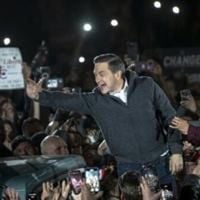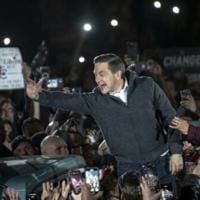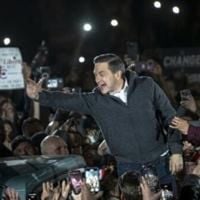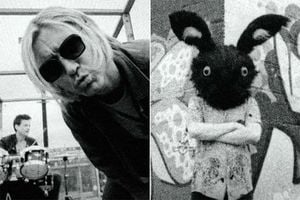Pierre Poilievre, the leader of Canada’s Conservative Party, is heading back to Ottawa this fall after clinching a decisive victory in a byelection for the rural Alberta riding of Battle River–Crowfoot. The win, announced late on August 18, 2025, cements his return to the House of Commons and sets the stage for what is expected to be a lively session in Parliament later this year.
Poilievre’s journey to this point has been anything but ordinary. After a whirlwind summer packed with rodeos, dinosaur exhibits, and countless door-knocking sessions, he emerged triumphant in a region known for its vast prairies and tight-knit communities. The campaign trail was marked by a hands-on approach, with Poilievre making it a point to meet as many constituents as possible, attend local events, and visit small businesses throughout the sprawling eastern Alberta riding.
The seat in Battle River–Crowfoot became available earlier this year, shortly after the April 2025 federal election. Damien Kurek, the previous Conservative representative, stepped down to make way for Poilievre’s candidacy, a move that underscored the party’s commitment to solidifying its leadership presence in the House of Commons. According to The Canadian Press, this strategic vacancy allowed Poilievre to contest a seat in a region that has long been considered a Conservative stronghold.
On the evening of his victory, Poilievre addressed a jubilant crowd in Camrose, Alberta. His words captured both gratitude and excitement for the path ahead. “Getting to know the people in this region has been the privilege of my life,” he said during his victory speech, as reported by The Canadian Press. “In fact, I’ve had a hell of a lot of fun.” The remark drew laughter and applause, a testament to the rapport he has built with local voters over the past several weeks.
For Poilievre, the byelection campaign was more than a political exercise; it was an opportunity to reconnect with grassroots issues and the everyday concerns of rural Albertans. Throughout the summer, he was spotted at community barbecues, agricultural fairs, and even the occasional small-town rodeo—embracing the local culture and making it clear that he intended to be a visible and engaged representative. This approach seemed to resonate with voters, many of whom expressed appreciation for a leader willing to roll up his sleeves and listen.
The Battle River–Crowfoot riding, situated in the heart of Alberta’s vast prairies, has a reputation for steadfast Conservative support. Its communities are spread across a wide geographic area, encompassing farmland, small towns, and a network of local businesses that form the backbone of the regional economy. Poilievre’s campaign made a point of highlighting these economic drivers, with frequent stops at family-run shops and agricultural enterprises. His message: Ottawa needs to pay attention to the voices and values of rural Canadians.
Observers note that Poilievre’s return to Parliament comes at a pivotal moment for the Conservative Party. With a federal election potentially on the horizon, the party is eager to present a united front and capitalize on recent momentum. Poilievre’s successful byelection bid not only reaffirms his leadership but also provides the party with a seasoned parliamentarian ready to take on the government benches this fall.
Behind the scenes, the decision by Damien Kurek to step down shortly after the April 2025 federal election was seen as a calculated move. According to The Canadian Press, this allowed the Conservative leader to secure a safe seat and focus his energies on national issues without the distraction of a contested nomination elsewhere. For Kurek, it was a gesture of party loyalty, and for Poilievre, it was an opportunity to reestablish his parliamentary credentials in a region that has consistently delivered strong Conservative majorities.
The weeks leading up to the byelection saw Poilievre crisscrossing the riding, often accompanied by local volunteers and supporters. He made stops in towns large and small, from Camrose to Hardisty, each visit punctuated by conversations with residents about everything from farm policy to the rising cost of living. The campaign’s grassroots focus was evident, with Poilievre frequently sharing stories from the trail and emphasizing the importance of listening to constituents’ concerns.
“I’ve had a hell of a lot of fun,” he repeated in his victory speech, underscoring the personal satisfaction he found in the campaign. The remark, while lighthearted, also spoke to a deeper connection with the region—a relationship that Poilievre aims to build upon as he returns to Ottawa.
The outcome of the byelection was never seriously in doubt, given the riding’s Conservative pedigree. Still, the campaign served as a valuable opportunity for Poilievre to sharpen his message and reconnect with the party’s rural base. In a political climate marked by uncertainty and shifting allegiances, such direct engagement is seen by many analysts as crucial for any leader hoping to steer their party to victory in the next federal contest.
Looking ahead, Poilievre’s return to Parliament is expected to inject new energy into Conservative ranks. With pressing issues on the national agenda—including economic recovery, agricultural policy, and the ongoing debate over federal-provincial relations—the party will be looking to its leader for direction and inspiration. The fact that Poilievre chose to contest a seat in Alberta, rather than a more urban or swing riding, sends a clear signal about his priorities and the constituencies he believes are central to the party’s future success.
Political observers across the spectrum are watching closely to see how Poilievre leverages his renewed mandate. Some suggest that his campaign style—grounded in personal interaction and community engagement—could serve as a model for other Conservative candidates, particularly in regions where the party’s support has waned in recent years. Others caution that the challenges facing the party extend beyond rural Alberta, and that broader outreach will be necessary to secure a national victory.
For now, though, the focus remains on Battle River–Crowfoot and the leader who will soon represent it in Ottawa. As Poilievre prepares to re-enter the House of Commons, his supporters are hopeful that the energy and enthusiasm displayed during the summer campaign will carry over into the legislative battles to come. Whether he’s debating policy on the floor of Parliament or chatting with constituents at a local fair, one thing is clear: Pierre Poilievre is back, and he’s ready to make his mark.
With the dust settling on the byelection and a new parliamentary session on the horizon, all eyes will be on Poilievre as he steps into his renewed role—bringing with him the voices of rural Alberta and the momentum of a hard-fought campaign.






